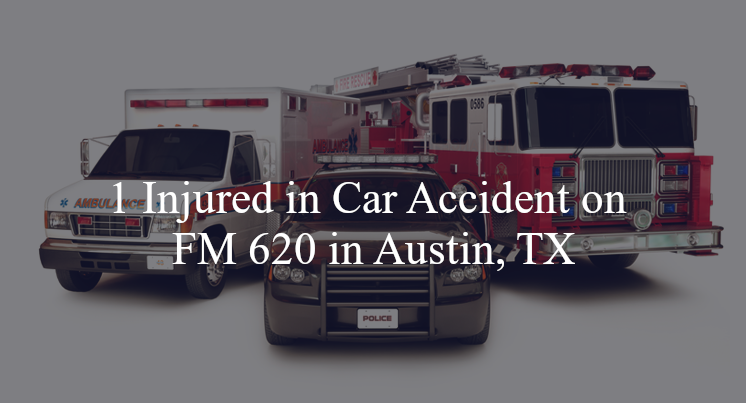1 Injured in Car Accident on FM 620 in Austin, TX
Austin, TX — March 5, 2025, One person was injured following a car accident that occurred Wednesday on FM 620 and Ranch Road 2222.

An investigation is underway following a car accident that left one person injured on March 5th in Travis County. According to official reports, the two-vehicle collision occurred in the intersection of FM 620 and Ranch Road 2222 and resulted in one of the vehicles rolling over, though the cause of the accident is unclear at this time.
When first responders arrived on the scene, they found that one person was pinned inside the vehicle, and after extracting them discovered that along with another person involved in the crash, had sustained serious injuries and they were transported to the hospital for treatment. At this time there has been no further information released, including the status of their injuries, however this remains an ongoing investigation and more details may be released by authorities in the future.
Commentary
When a vehicle rollover results from a two-car collision—particularly at an intersection like FM 620 and Ranch Road 2222—it’s essential to examine the circumstances with careful attention to three fundamental questions: (1) Did the authorities thoroughly investigate the crash? (2) Has anyone looked into the possibility that a vehicle defect caused or contributed to the crash? (3) Has all the electronic data relating to the crash been collected?
While early reports confirm that one of the vehicles rolled over and that at least two people were seriously injured, the underlying cause of the crash remains uncertain. In intersection collisions, many assume driver error or failure to yield, but a meaningful investigation must go further. It should include measuring vehicle positions, analyzing skid marks, examining sightlines, and checking for traffic signal or signage issues. These steps are essential to understanding not just what happened, but why.
It's also important to consider whether a mechanical or structural issue in one of the vehicles played a role. Rollovers are often influenced by a vehicle’s center of gravity, suspension design, or even the condition of the tires. Was the rollover caused by the impact itself, or did the design of the vehicle contribute to its instability? Similarly, if one of the vehicles had a delayed brake response, steering problem, or other mechanical failure, it could have created or worsened the conditions leading to the collision. These possibilities can only be confirmed or ruled out through a full mechanical inspection of both vehicles involved.
Additionally, both vehicles may contain electronic control modules (ECMs) that store critical data from the moments before the crash. These modules often record speed, braking activity, throttle input, and steering movements, providing a factual account of what each vehicle was doing just prior to impact. This data can help clarify whether evasive actions were taken, whether a vehicle failed to respond to driver input, or whether there were warning signs of a malfunction. However, preserving ECM data must be a priority early in the investigation, before the vehicles are moved or salvaged.
Until these three core questions are fully addressed, the picture of what caused this rollover remains incomplete. A thorough investigation—combining scene analysis, mechanical inspection, and digital evidence—is key to uncovering the full story and ensuring that any contributing factors are identified, whether they involve road conditions, vehicle performance, or something else entirely.

*We appreciate your feedback and welcome anyone to comment on our blog entries, however all visitor blog comments must be approved by the site moderator prior to showing live on the site. By submitting a blog comment you acknowledge that your post may appear live on the site for any visitors to see, pending moderator approval. The operators of this site are not responsible for the accuracy or content of the comments made by site visitors. By submitting a comment, blog post, or email to this site you acknowledge that you may receive a response with regard to your questions or concerns. If you contact Grossman Law Offices using this online form, your message will not create an attorney-client relationship and will not necessarily be treated as privileged or confidential! You should not send sensitive or confidential information via the Internet. Since the Internet is not necessarily a secure environment, it is not possible to ensure that your message sent via the Internet might be kept secure and confidential. When you fill out a contact or comment form, send us an email directly, initiate a chat session or call us, you acknowledge we may use your contact information to communicate with you in the future for marketing purposes, but such marketing will always be done in an ethical way.